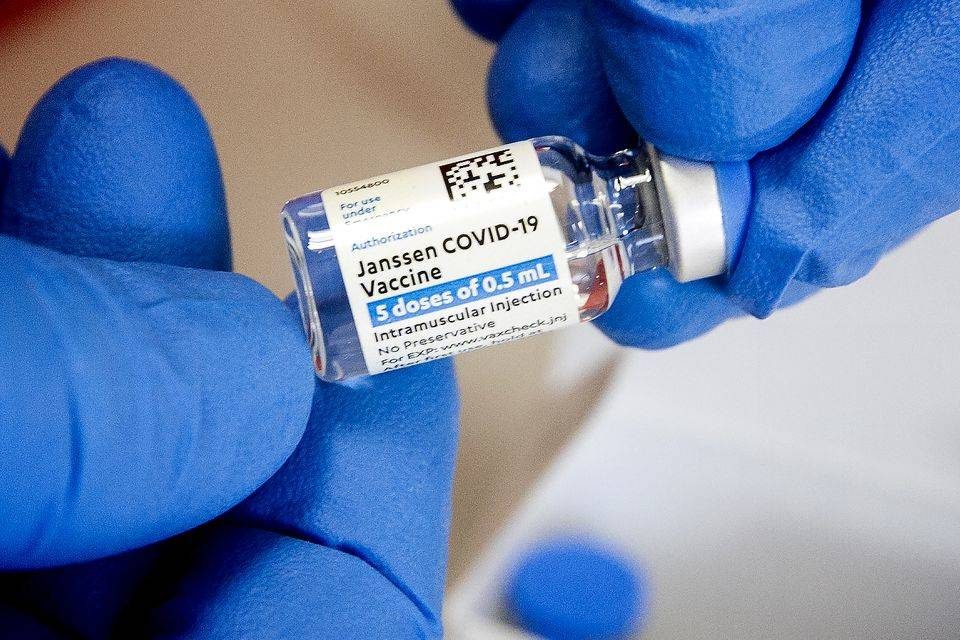COVID-19 is the illness caused by the novel coronavirus, SARS-CoV-2. While many people with COVID-19 get mild symptoms, others can become seriously ill. Several vaccines have been developed to protect against COVID-19.
The Food and Drug Administration (FDA) has so far authorized three COVID-19 vaccines for emergency use. Two of these are the Pfizer-BioNTech and Moderna vaccines. Both of these vaccines require two doses.
The Johnson & Johnson vaccine has also been authorized for emergency use. However, this vaccine only requires one dose.
Why do some vaccines require two doses? How long do you need to wait between doses? Do you have any immunity after the first dose?
This article will help explain why you need two doses of the Pfizer-BioNTech and Moderna vaccines, and will provide answers to many other questions, too.
The Pfizer-BioNTech and Moderna vaccines both use mRNA technology. The cells in your body naturally use mRNA all the time to create many different types of proteins that you need to stay healthy.
The mRNA in the two-dose COVID-19 vaccines provide the cells of your body with instructions on how to make the spike protein that’s specific to the new coronavirus. This spike protein is found on the surface of the virus. It uses this spike protein to attach to and enter a host cell in your body.
When you get your COVID-19 vaccine, your immune system processes information on the spike protein and generates an immune response to it. This includes the production of antibodies.
Vaccines hinge on a very important aspect of your immune system, which is the fact that it has memory. After your vaccination, your immune system continues to store information on the spike protein.
If you’re exposed to the new coronavirus, your immune system will then use this stored information to respond and protect you from the virus. This can help prevent you from becoming sick with COVID-19.
The entire immunity process typically takes around 2 weeks after the second dose of vaccine. That’s why you can still contract the new coronavirus and become ill if you’re exposed to it shortly after getting your vaccine.
During early studies, researchers found that the Pfizer-BioNTech and Moderna vaccines provoke a relatively weakTrusted Source immune response when given as just one dose. However, there was a stronger immune response when a second dose was added.
Basically, the first dose of the vaccine starts the process of building up protection. The second dose works to greatly reinforce this protection.
Here’s an analogy to help explain this: You and a friend are trying to move a heavy table across a room. Between the two of you, you’re able to get it partway there. Then, another couple of friends jump in to help, and you’re all able to move it the rest of the way.
Vaccines that need more than one dose aren’t that uncommon. Some examples of other vaccines that are part of a multi-dose series include:
- the measle-mumps-rubella (MMR) vaccine
- vaccines against hepatitis A and hepatitis B
- the shingles vaccine
Are there other COVID-19 vaccines that require two doses?
Several other types of COVID-19 vaccines, including ones still under development, also require two doses. Some examples include:
- Oxford-AstraZeneca: two doses given 8 to 12 weeksTrusted Source apart
- Novavax: two doses given 3 weeksTrusted Source apart
- Sputnik V: two doses given 3 weeksTrusted Source apart
- Coronavac: two doses given 1 monthTrusted Source apart
Do some COVID-19 vaccines only require one dose?
The COVID-19 vaccine that’s been developed by Johnson & Johnson only requires one dose.
After reviewing safety and effectiveness data from large-scale clinical trials, the FDA has granted this vaccine Emergency Use AuthorizationTrusted Source in the United States.

For both the Pfizer-BioNTech and Moderna vaccine, there’s a waiting period between the first and second dose. The timeframe between the doses depends on which vaccine you received.
Timeframe between two-dose vaccines
- Pfizer-BioNTech. You receive your second dose 3 weeks (21 days) after your first dose.
- Moderna. You receive your second dose 4 weeks (28 days) after your first dose.
Why do you need this waiting period?
The first dose helps to prime your immune system. It introduces it to the spike protein and allows it to generate a small immune response prior to the second dose. Time is needed to allow this process to develop properly.
It’s also important not to get your second dose too early, as this may impact the effectiveness of the vaccine.
According to guidelines from the Centers for Disease Control and Prevention (CDC)Trusted Source, you can receive your second dose up to 4 days earlier than recommended.
The CDCTrusted Source recommends that you receive your second dose as close to the required interval as possible.
You may be wondering what happens if you can’t get your second dose within the specified timeframes. The CDC has guidanceTrusted Source for this as well. In these situations, the second dose can be given up to 6 weeks (42 days) after the first dose.
We currently don’t know if delaying the second dose longer than this time has an impact on immunity.
If possible, try to schedule your appointment for your second dose on the day you get your first dose. If you didn’t schedule your second dose at this time, contact the location where you received your first dose to make an appointment.
Even though the Pfizer-BioNTech and Moderna vaccines require two doses, you do get some immunity after you receive the first dose. Let’s examine this in a little more detail below.
Pfizer-BioNTech
Researchers working on the clinical trials for the Pfizer-BioNTech vaccine observed a vaccine effectiveness of 52 percent between the time of the first and second doses, which is a 21-day period.
However, the Pfizer-BioNTech vaccine may be more effective after the first dose than was previously thought. This information comes from a separate analysis from scientists in the United Kingdom.
These scientists wanted to look at vaccine effectiveness 15 days or more after people had received the first dose of the Pfizer-BioNTech vaccine. They found that vaccine effectiveness was actually closer to 89 to 91 percent 15 days after the first dose.
Moderna
In a reportTrusted Source submitted to the FDA, researchers discussed vaccine effectiveness in clinical trial participants who’d only gotten one dose of the vaccine.
A vaccine effectiveness of 50.8 percent was found up to 14 days after the first dose. Vaccine effectiveness was 92.1 percent beyond the first 14 days.
Now let’s look at immunity after receiving the second dose of the Pfizer-BioNTech or Moderna vaccine.
Pfizer-BioNTech
Pfizer-BioNTech immunityResearchers working on the Pfizer-BioNTech vaccine clinical trial looked at vaccine effectiveness 7 days after the second dose. At this point, vaccine effectiveness was observed to be 95 percent.
And what about longer-term immunity? A separate study, currently in preprint, looked into this. This study followed people for 63 days after they’d received their second dose.
The researchers observed a strong antibody response following the second dose. While the overall levels of antibodies began to decrease slowly as time passed, they still remained high at the 63-day mark.
Moderna
Moderna immunityInvestigators working on the Moderna clinical trial evaluated vaccine effectiveness 14 days after trial participants had gotten their second dose.
Vaccine effectiveness was 94.1 percent at this point.
Researchers also published a separate study of the immune response to the Moderna vaccine 90 days after the second dose. This study was rather small, involving 34 participants.
High levels of antibodies were made following the second dose. Similar to the Pfizer-BioNTech study discussed above, antibody levels started to slowly decrease over time. However, immunity persisted at high levels at the 90-day mark.
Is the second dose necessary?
Because both vaccines appear to have high effectiveness 14 days or more after the first dose, you may be wondering whether the second dose of the vaccine is actually necessary.
It’s true that there have been discussions amongst public health officials and scientists about the possibility of delaying or eliminating the second dose of these vaccines.
The thought process behind this is that either delaying or eliminating the second dose would enable a greater number of people to get some level of protection. It would also aid in stretching vaccine supplies to more people.
However, there are some concerns about doing this. It’s possible that overall immunity or vaccine effectiveness could be impacted. Additionally, lower levels of immunity could drive the emergence of more virus variants that can escape our current vaccines.
Additional research into delaying or eliminating second doses is needed. Currently, the FDA strongly recommendsTrusted Source continuing to follow the dosing schedule that was both tested in clinical trials and authorized for emergency use.
The CDCTrusted Source notes that although there’s no preference for one vaccine over another, the two vaccines aren’t interchangeable. Because of this, it’s important to receive your second dose from the same product as your first dose.
This is one of the reasons why COVID-19 vaccine record cards are provided after you receive your first dose. These cards provide valuable information about which vaccine you received and the date on which you received it.
The two-dose COVID-19 vaccines have similar side effects, such as:
- injection site reactions, which can include pain, redness, or swelling
- fatigue
- fever
- chills
- headache
- body aches and pains
- nausea
- swollen lymph nodes
Side effects that are felt throughout your body, such as fever, fatigue, and headache, are more common after getting the second dose of the vaccine. This is true for both the Pfizer-BioNTech and Moderna vaccines.
Remember that the first dose of the vaccine generates a weaker response than the second dose. Because of this, you’re more likely to feel side effects after the second dose.
These side effects are actually a sign that an immune response is taking place in your body. But, it’s also normal not to have any side effects at all. The vaccine will still be boosting your immune response, even without symptoms.
Some COVID-19 vaccines, such as those produced by Pfizer-BioNTech and Moderna, require two doses. Others, such as the Johnson & Johnson vaccine, only require one dose.
Some vaccines require two doses because the immune response to the first dose is rather weak. The second dose helps to better reinforce this immune response.
When you get your COVID-19 vaccine, be sure to hold onto your vaccine record card afterward. This helps to ensure that you know which vaccine you received and when you’ll need to schedule your second dose.








